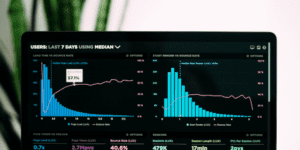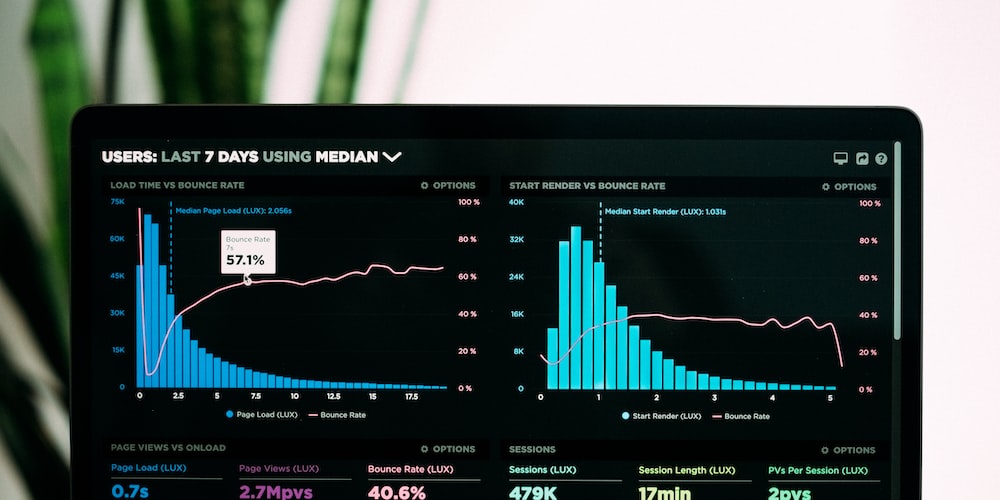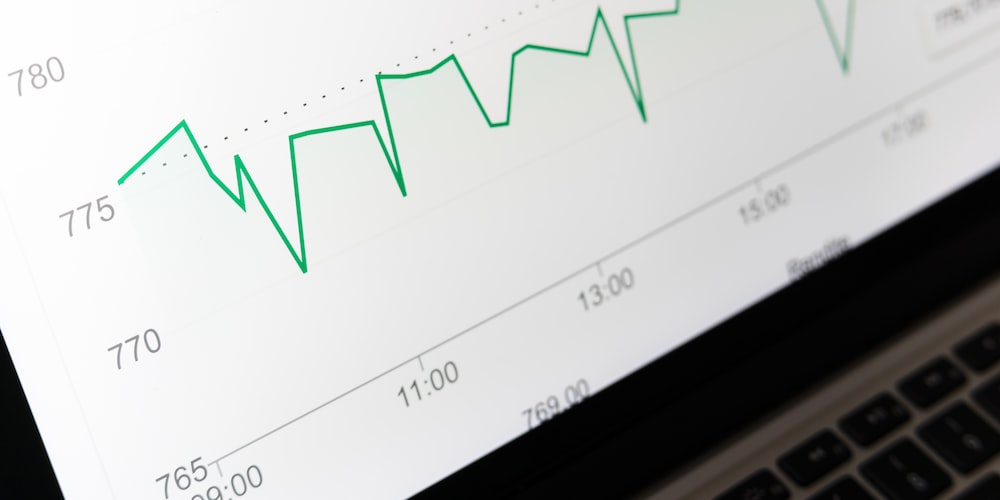
What is the “Rounded Bottom” Price Pattern?
The Rounded Bottom pattern, and how to use it The rounded bottom pattern, also known as a saucer bottom pattern, is

Asian equity markets mostly firmed ahead of the weekend and next week’s lunar new year holiday. Markets had ended lower in the US and Europe yesterday. The US Federal Reserve’s Brainard, usually considered to be a dovish rate-setter, said policy will need to be restrictive for some time to get inflation down. Meanwhile, European Central Bank President Lagarde said inflation remains “way too high”. Data from Japan revealed a rise in core CPI (excluding fresh food) to 4.0% in line with forecasts but maintaining speculation about future Bank of Japan policy changes.
UK data released earlier today were more downbeat than expected. January GfK consumer confidence unexpectedly fell back to -45 from -42 in December, although still above September’s all-time low of -49. The gauge of personal finances for the next twelve months improved, but other components such as the climate for major purchases fell. Also disappointing expectations were official December retail sales which declined for a second month in a row. Headline retail sales were down 1.0%, driven by significantly lower non-food sales while grocery sales were down slightly. The ONS said consumers were cutting back due to increased prices and affordability concerns.
In the Eurozone, German producer price inflation fell for a third consecutive month to 21.6% in December from 28.2% in November. The ECB’s Lagarde speaks in Davos later today and, as noted above, continues to express concern that inflation is still too high. That supports the view that ECB is likely to raise interest rates by 50bp at the next meeting in early February, which would bring interest rates (the deposit rate) up to 2.5%. There are unconfirmed reports that the ECB may consider smaller hikes after the next meeting, but more hawkish rate-setters will be seeking another 50bp hike.
US existing home sales data are expected to show another decline as higher interest rates take effect. That would be the eleventh straight fall. Ahead of next week’s blackout period, the Fed’s Harker and Waller are both scheduled to speak today. Harker has recently indicated that he favours a smaller 25bp rate rise at the next meeting.
The pound weakened following the downbeat consumer data this morning. GBP/USD declined from an overnight high of just below 1.24 overnight towards 1.2350, although some of the fall has since been reversed. EUR/USD fluctuated around the 1.08 level. UK 10-year gilt yields closed lower at 3.28%, while US 10-year Treasury yields edged above 3.4% overnight.

The Triple Top pattern, and how to use it The triple top pattern is a bearish chart pattern that is formed by three distinct peaks, with the price rising to a resistance level and then falling back down each time. …

The Triple Bottom pattern, and how to use it The triple bottom pattern is a bullish chart pattern that is formed by three distinct troughs, with the price falling to a support level and then rising back up each time. …

▸Unlock proven, back-tested signals, high-quality trade setups and more. Access PRO TRADER:
Receive regular updates on markets, key education concepts and more:
OVERNIGHT Asian equity markets were lower following yesterday’s stronger-than-expected US producer price inflation data and some hawkish Fed.. →
Read MoreOVERNIGHT Risk appetite was positive during the Asian trading session as investors digested the latest economic data and.. →
Read MoreOVERNIGHT Asian equity markets are all down this morning as uncertainty about the inflation and interest rate outlook.. →
Read MoreOVERNIGHT Asian equities are mostly up this morning. Japan posted a smaller-than-forecast Q4 GDP rise of 0.2% following.. →
Read MoreOVERNIGHT Asian equities are mixed this morning with Chinese indices higher but most other markets lower. Friday reports.. →
Read MoreOVERNIGHT Asian equities are mostly lower this morning. That followed declines in US equities that reports suggest were.. →
Read MoreOVERNIGHT Mixed Asian equity market performance followed the close in the red on Wall Street. Several US Fed.. →
Read MoreOVERNIGHT Asian equity markets are mixed with Chinese and Japanese indices down but most others up. Fed Chair.. →
Read MoreOVERNIGHT Asian equity markets are mostly higher and Treasury yields and the US dollar lower ahead of Fed.. →
Read MoreOVERNIGHT Stocks across the Asia-Pacific region are mostly trading lower this morning as financial markets continued to react.. →
Read MoreOVERNIGHT Asian equity markets are mixed, reportedly due in part to disappointing after-hours results from some major tech.. →
Read MoreOVERNIGHT US equity and Treasury markets rallied following the Fed policy update yesterday. Asian stocks overnight are also.. →
Read MoreOVERNIGHT Asian equity markets are mostly up this morning. That follows a sizeable rise in US equities fuelled.. →
Read MoreOVERNIGHT Asian equity markets are mostly down this morning as nervousness grows ahead of key monetary policy updates.. →
Read MoreOVERNIGHT Stock markets across the Asia-Pacific region are mostly trading lower this morning ahead of looming policy decisions.. →
Read MoreOVERNIGHT Asian equity markets remained in constructive mood following rises in US and European stocks. Yesterday’s US data.. →
Read MoreOVERNIGHT Asian equity markets are mixed with the notable exception of Hong Kong’s strong rise as it plays.. →
Read MoreOVERNIGHT Many Asian equity markets continue to be closed for the lunar new year but those open have.. →
Read MoreOVERNIGHT Several Asian equity markets are closed for the lunar new year holiday this morning but those that.. →
Read MoreOVERNIGHT A number of markets across the Asia Pacific are closed for the Lunar New Year holiday. However,.. →
Read MoreOVERNIGHT Asian equity markets mostly firmed ahead of the weekend and next week’s lunar new year holiday. Markets.. →
Read MoreThe Triple Top pattern, and how to use it The triple top pattern is a bearish chart pattern.. →
Read MoreThe Triple Bottom pattern, and how to use it The triple bottom pattern is a bullish chart pattern.. →
Read MoreThe Rounded Top pattern, and how to use it The rounded top pattern, also known as a saucer.. →
Read MoreThe Rounded Bottom pattern, and how to use it The rounded bottom pattern, also known as a saucer.. →
Read MoreOVERNIGHT Asian equity markets are mixed this morning with Japan down but most others up. Chinese President Xi.. →
Read MoreThe Rising Wedge pattern, and how to use it The rising wedge pattern is a bearish chart pattern.. →
Read MoreThe Inverted Head And Shoulders pattern, and how to use it The inverted head and shoulders pattern is.. →
Read MoreOVERNIGHT Asian equities are mixed this morning as the Japanese market is up sharply, but others are seeing.. →
Read MoreThe Inverted Cup And Handle pattern, and how to use it The inverted cup and handle is a.. →
Read MoreOVERNIGHT The rally in Asian equity markets this year took a breather as China reported a sharp slowdown.. →
Read MoreThe Head And Shoulders pattern, and how to use it The head and shoulders pattern is a bearish.. →
Read MoreThe Falling Wedge pattern, and how to use it The falling wedge is a bullish chart pattern that.. →
Read MoreOVERNIGHT Following gains recorded on Wall Street on Friday, equities across Asia started today mostly higher on hopes.. →
Read MoreThe Double Top pattern, and how to use it The double top is a bearish chart pattern that.. →
Read MoreOVERNIGHT Asian equity markets are mostly up his morning after US CPI data for December helped cement expectations.. →
Read More
The Rounded Bottom pattern, and how to use it The rounded bottom pattern, also known as a saucer bottom pattern, is

OVERNIGHT Asian equity markets are mixed this morning with Japan down but most others up. Chinese President Xi has warned that

The Rising Wedge pattern, and how to use it The rising wedge pattern is a bearish chart pattern that is formed

The Inverted Head And Shoulders pattern, and how to use it The inverted head and shoulders pattern is a bullish chart

OVERNIGHT Asian equities are mixed this morning as the Japanese market is up sharply, but others are seeing more modest rises

The Inverted Cup And Handle pattern, and how to use it The inverted cup and handle is a bearish chart pattern

OVERNIGHT The rally in Asian equity markets this year took a breather as China reported a sharp slowdown GDP growth in

The Head And Shoulders pattern, and how to use it The head and shoulders pattern is a bearish chart pattern that

The Falling Wedge pattern, and how to use it The falling wedge is a bullish chart pattern that is formed by

OVERNIGHT Following gains recorded on Wall Street on Friday, equities across Asia started today mostly higher on hopes that global inflationary

The Double Top pattern, and how to use it The double top is a bearish chart pattern that is formed by

OVERNIGHT Asian equity markets are mostly up his morning after US CPI data for December helped cement expectations US interest rates

The Rounded Top pattern, and how to use it The rounded top pattern, also known as a saucer top pattern, is a bearish chart pattern that is formed by a rounded, “U” shaped pattern. This pattern is created when the …

The Rounded Bottom pattern, and how to use it The rounded bottom pattern, also known as a saucer bottom pattern, is a bullish chart pattern that is formed by a rounded, “U” shaped pattern. This pattern is created when the …

Asian equity markets are mixed this morning with Japan down but most others up. Chinese President Xi has warned that traveling over the lunar new year holiday may further spread the latest outbreak of Covid in China. The US government is expected to reach its debt ceiling limit possibly as early as today after which it can longer issue new Federal debt. It will take contingency measures near term but is expected to run out of leeway by the summer unless Congress agrees to raise the ceiling.
The Norwegian central bank is expected to leave interest rates unchanged at its latest policy update following further signs in the latest inflation data that price pressures are cooling. The Norges Bank was one of the first to raise interest rates at the start of the current hiking cycle in late 2021 and now seems set to be one of the first to stop tightening. However, one last hike of 25 basis points is currently still generally expected in March.
December US housing starts are forecast to show another large fall. Some of that will be a result of the big pre-Christmas storm but much of it will reflect underlying weakness due to higher interest rates. Also after a much bigger than expected fall in the January New York Federal Reserve manufacturing survey, the equivalent for the Philadelphia area will be watched closely. In Japan an expected further rise in CPI inflation this evening may add to concerns that Bank of Japan monetary policy is set to become more hawkish.
European Central Bank President Lagarde is scheduled to speak at the Davos conference today. She is likely to reiterate previous cautious guidance that inflationary pressures are still too high and so Eurozone interest rates have further to rise. Several US Federal Reserve policy makers are also set to speak, including Fed Vice Chair Brainard. She is generally considered to be one of the more dovish members of the interest rate setting committee so it will be interesting to see whether there are any signs that her support for further hikes is wavering.
Early Friday, UK data for retail sales and UK consumer confidence will provide further evidence on the impact of cost-of-living increases on consumer activity. Retail sales may have increased in December, with the cold weather snap and the World Cup potentially providing a boost. GfK consumer confidence may have improved for a fourth month in a row to -40 in January. The context, though, is that retail sales are still likely to have contracted during Q4 for the sixth successive quarter, and consumer confidence remains at historically very weak levels.
US bond yields fell sharply yesterday after weak economic data suggested that the Fed may soon stop raising interest rates. UK gilt yields also declined albeit more modestly. In currency markets, the main crosses were little changed but the Aussie dollar declined after weaker-than-forecast labour market data.

The Rising Wedge pattern, and how to use it The rising wedge pattern is a bearish chart pattern that is formed by a diagonal line with a slope that is upward and to the right. This pattern is created when …

The Inverted Head And Shoulders pattern, and how to use it The inverted head and shoulders pattern is a bullish chart pattern that is formed by a trough, followed by a lower trough, and then a final higher trough. The …

Asian equities are mixed this morning as the Japanese market is up sharply, but others are seeing more modest rises or small falls. The move in Japan followed confirmation from the Bank of Japan that it had left its monetary policy unchanged this month. That news also led to a decline in the yen as there had seemingly been some concern in markets beforehand that the BoJ would follow up on last month’s decision to raise its target for long-dated bond with a further tightening move. Instead, the soon to leave BoJ Governor Kuroda reiterated continued support for a highly stimulatory policy position.
Just released data showed that UK annual CPI inflation (Dec) dropped to 10.5% from 10.7% in November. As expected, the fall is mostly due to a big decline in petrol prices as ‘core’ inflation was unchanged from November at 6.3%. Another fall seems likely next month as petrol and food prices continue to ease. Moreover, inflation seems set to fall sharply further in coming months and October’s inflation rate of 11.1% now looking increasingly likely to have been a peak. However, still elevated domestic inflationary pressures from a tight labour market, which could continue to exert upward pressure on services prices, will remain an area of concern for the Bank of England.
US December retail sales are forecast to have fallen sharply and industrial production is also expected to be down. Some of that weakness will probably reflect the impact of the severe storm that hit the US late in the month. Moreover, as US retail sales are not adjusted for inflation some of the decline in that area will be a price effect. However, it does seem that underlying activity is also weakening with sales of big-ticket items such as cars expected to be sharply lower.
Meanwhile, US December PPI data are likely to reveal further disinflationary pressure in the pipeline. Last week’s US CPI data for December showed that goods inflation is now falling as bottlenecks ease and prices in some areas, notably autos, are much lower than a year ago. The Federal Reserve’s Beige Book of anecdotal evidence on the economy will also provide indications on these trends. Several Fed policymakers are also set to speak.
In the Eurozone, the final reading for December CPI is expected to confirm that headline inflation fell for the second successive month. However, European Central Bank clearly seem concerned that core inflation rose to a new high and as a result they seem set to raise policy interest rates by another 50 basis points in February.
In currency markets sterling has risen this morning against the US dollar and, albeit to a lesser extent, against the euro as today’s inflation data reinforced the case for a further interest rate hike by the Bank of England. Today’s US releases will be the next key focus for markets.
CFDs are complex instruments and come with a high risk of losing money rapidly due to leverage. You should consider whether you understand how CFDs work and whether you can afford to take the high risk of losing your money. Trading derivatives is risky. It isn't suitable for everyone; you could lose substantially more than your initial investment. You don't own or have rights to the underlying assets. Past performance is no indication of future performance and tax laws are subject to change. The information on this website is general in nature and doesn't consider your personal objectives, financial circumstances, or needs. Please read our legal documents and ensure that you fully understand the risks before you make any trading decisions.
The information on this site is not intended for residents of Canada, the United States, any other restricted jurisdictions (e.g. blacklisted FATF countries) or use by any person in any country or jurisdiction where such distribution or use would be contrary to local law or regulation.
Moneta Markets is a trading name of Moneta Markets Ltd, authorised and regulated by the Financial Services Authority of Seychelles with License No. SD144. Moneta Markets Ltd is registered and located at Room B11, 1st Floor, Providence Complex, Providence, Mahe, Seychelles which operates under www.monetamarkets.sc.
You should consider whether you’re part of our target market by reviewing our , and read our other legal documents to ensure you fully understand the risks before you make any trading decisions. We encourage you to seek independent advice if necessary.